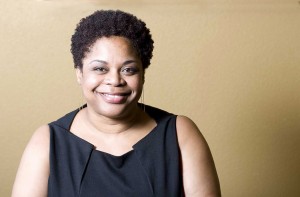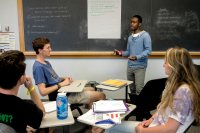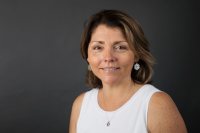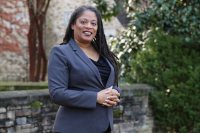
Mellon grants advance faculty diversity on campus and beyond
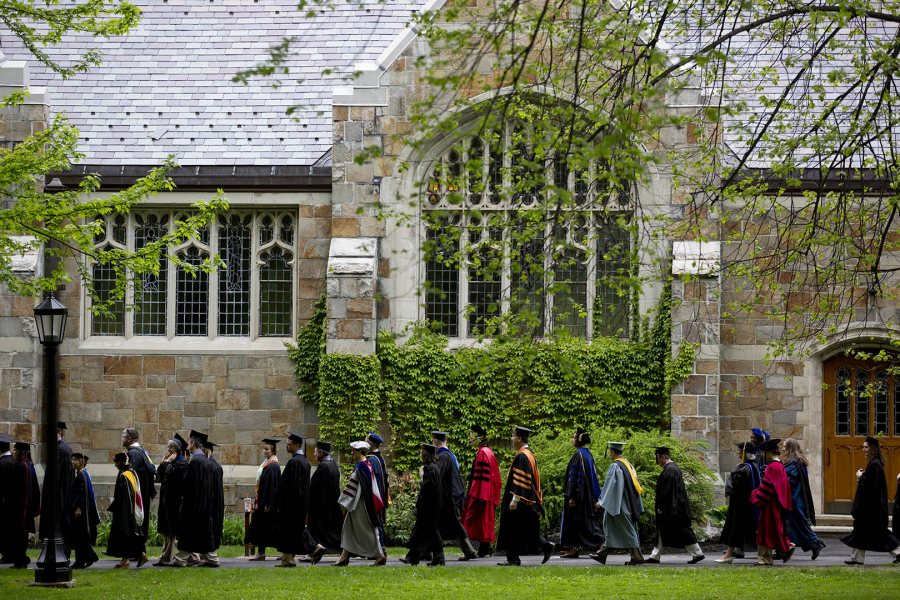
With support from the Andrew W. Mellon Foundation, Bates looks forward to advancing broad diversity among its faculty. (Phyllis Graber Jensen/Bates College)
How do students benefit from a college faculty that represents a broad diversity of experiences and perspectives?
Crystal Williams, chief diversity officer at Bates College, suggests that one answer lies in an essential role of the teacher. Faculty members ask questions, she says — questions whose answers the professors and students explore together.
Those questions “are inextricably linked to our cultural, social, gendered, racialized selves,” Williams explains. “The more diverse the people are who ask those questions, the more complete, exciting and dynamic the resulting knowledge is.
“So diversifying the faculty is imperative to ensure that we remain as excellent a faculty in the 21st century as we were in the 20th, and doing so requires that we include as many voices and as many questions as possible.”
Bates recently received two grants, totaling more than $1.4 million, from the Andrew W. Mellon Foundation to advance faculty diversity, both on Bates’ own campus and as part of a collaborative effort with other institutions. The Mellon Foundation defines diversity broadly, including first-generation college students and those who have overcome adversity to launch a college career.
“These grants position Bates to transform its faculty and ensure that we become a leader in the liberal arts sector with regard to faculty diversification,” says Williams.
The five-year, $1 million Mellon Diversity and Faculty Renewal grant will support a four-part strategy to put more promising candidates from underrepresented groups on the tenure track at Bates during the next five years, as well as to build the college’s long-term capacity for recruiting superior faculty from all walks of life.
Emerging as Bates anticipates the retirements of a substantial proportion of its current faculty — about a third during the next decade — this initiative explicitly links the recruiting of diverse candidates for tenure-track positions to faculty retirements.
An additional $419,360 comes to Bates from Mellon as the college becomes a leadership institution in the Creating Connections Consortium, a national partnership designed to advance faculty diversity. C3 brings together undergrads, graduate students, postdoctoral fellows, faculty and administrators to create mentoring and research relationships, and to better prepare young scholars for careers in liberal arts colleges.
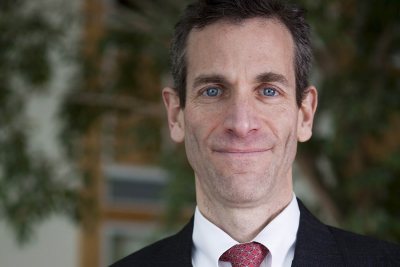
Matt Auer, dean of the faculty and vice president for academic affairs at Bates. (Sarah Crosby/Bates College)
Bates is the fourth liberal arts college, and sixth lead institution overall, in C3. It joins Connecticut, Middlebury and Williams colleges and two research institutions, the University of California at Berkeley and Columbia University.
Among other initiatives, the consortium provides fellowships intended to give young scholars from underrepresented groups a feel for the possibilities in academe. Undergraduate fellowships support students — three from Bates in 2014 and two in 2015 — through a summer of graduate-level studies at Berkeley or Columbia.
A second C3 fellowship program enables postdoctoral fellows, aka “postdocs,” from Columbia and Berkeley to teach and do research at C3’s liberal arts colleges, exposing them to the rewards of working in an academic setting distinctly different from the research university. Bates will host two or three postdocs in 2016 and 2017.
“Part of the idea is for us to deepen our understanding about diverse groups of postdocs in particular fields, and have the experience of working with them here,” says Matt Auer, the college’s dean of the faculty and vice president for academic affairs. “At the same time, another part is to get the postdocs, who are coming from great institutions, to recognize the value of a career at a liberal arts college.”
C3 also holds a yearly summit, a national gathering of students, faculty and leaders of the consortium institutions, that Bates will host in November.
Receiving Mellon grants that are “focused right on the bull’s-eye of diversity and inclusiveness,” Auer says, “is very much in keeping with Bates’ basic mission, which is to learn from our differences and derive strength from that.”
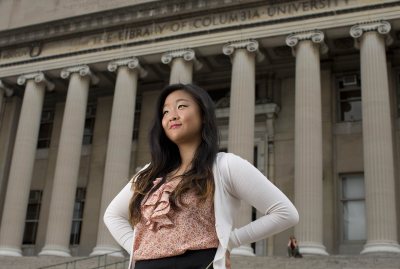
Eileen Lam ’15 of New York City is shown at Columbia University. A fellowship from the Creating Connections Consortium enabled Lam to spend summer 2014 experiencing graduate-level work at Columbia. (Phyllis Graber Jensen/Bates College)
The Mellon Foundation specifically supports initiatives involving the humanities and the “humanistic social sciences” (that is, social and behavioral disciplines that explore the human experience through methods akin to the humanities, rather than the scientific method).
Through these grants, Bates seeks to encourage applications from individuals from underrepresented groups including African Americans, Hispanics, Native Americans, Alaska Natives, Native Hawaiians, other Pacific Islanders, Asian Americans; first-generation college students; individuals who have followed nontraditional pathways to college owing to exceptional talent and motivation in the face of adversity; and individuals with a demonstrated commitment to incorporating diverse backgrounds and perspectives to learning, scholarship, service and academic leadership.
More about the Mellon Diversity and Faculty Renewal Program
The program will, first, make Bates more attractive to strong candidates and, second, better enable existing faculty to find and recruit candidates. Here’s a summary of the four strategies supported by the grant:
- Recruitment of up to six postdocs through one- or two-year postdoctoral teaching and research fellowships attached to tenure-track positions;
- Creation of a Diversity Advocate Team to help build capacity among faculty to more effectively recruit and retain a broadly diverse faculty. This faculty team will undertake programming tailored to subject areas, and will assist or serve on search committees. This element of the program is designed to have an impact across disciplines;
- Outreach and travel to develop recruiting networks through attending appropriate meetings, conferences, etc.;
- A New Scholars Program engaging young academics from underrepresented groups through academic programming at Bates, such as dialogues and symposia.
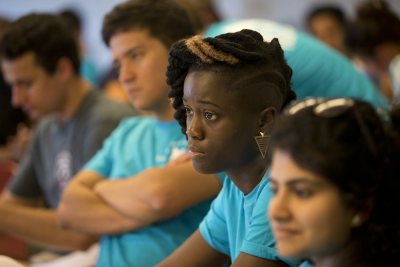
Students benefit from a college faculty that represents a broad diversity of experiences and perspectives. Here, Bates junior advisers and residence coordinators participate in a mediation training session in August 2014. (Phyllis Graber Jensen/Bates College)
Thanks to the Faculty Diversity and Renewal Program, the college can offer “a postdoctoral experience where they’ll get to know the institution, won’t have as high a teaching load and can get quite a bit of scholarship done, which is hard when you’re in your first couple of years as a tenure-track faculty member,” Auer explains.
These postdocs, he adds, will “experience a superb liberal arts college that takes scholarship seriously — and where students are part of the intellectual environment. Students are collaborators and are steeped in the faculty’s own research. That’s a model that the postdocs will frankly be hard-pressed to find at many research universities.”
The Diversity Advocate Team, meanwhile, will enable departments to become “more strategic in how they think about diversity in their fields, and how they can scout a more diverse candidate pool well in advance of actually trying to recruit those candidates,” Auer says.
“The work of building the faculty should be strategic and aggressive” when it comes to broadly representing humanity, Williams says. “We can no longer just sit back patiently and wait for the applications to come in without regard to best practices in the field.
“If you want an extraordinary faculty comprised of the nation’s most diversely cast thinkers and creators, we have to develop much more active recruitment models. And we have to activate the faculty in new and exciting ways.”
“I can’t wait to see what our faculty looks like in five years,” Williams adds. “What lies ahead of us is incredibly exciting.”
